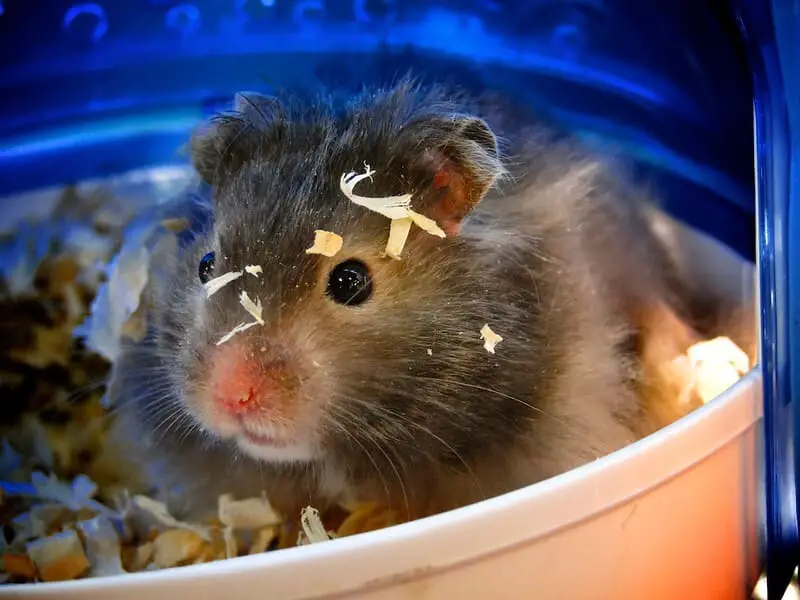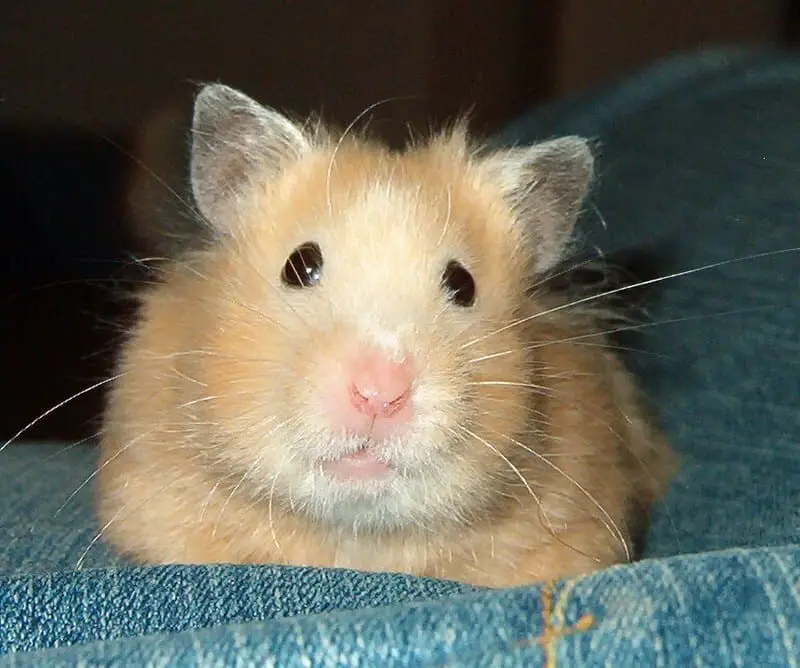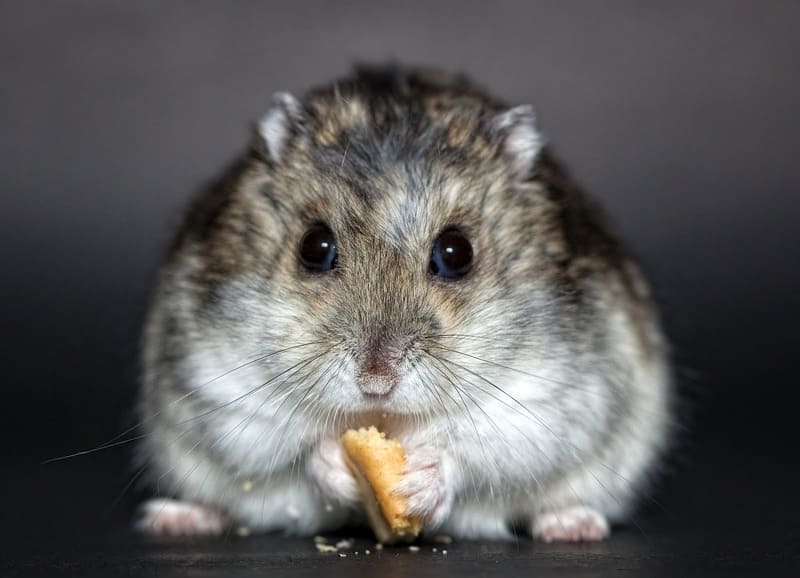Hamsters are adorable, low-maintenance pets that have become increasingly popular among pet owners, especially those looking for a small and gentle companion. While they are relatively easy to care for, hamster owners often wonder about certain aspects of their pet’s health and well-being. One common concern is whether or not they should cut their hamster’s nails. To answer this question, we need to consider various factors, including the anatomy of hamster nails, the importance of nail care, the risks of cutting nails, and safe techniques for nail trimming.

Understanding Hamster Nail Anatomy
Before diving into the decision of whether to cut your hamster’s nails, it’s important to understand the anatomy of a hamster’s nails. A hamster’s nails, like those of many other small rodents, are constantly growing throughout their life. These tiny, sharp claws serve several purposes:
1. Climbing
Hamsters are natural climbers, and their sharp nails enable them to navigate their habitat, which often includes tubes, platforms, and toys. These claws provide them with the grip they need to explore and play in their enclosure.
2. Digging
Hamsters love to dig and burrow in their bedding, and their sharp nails help them efficiently create tunnels and nests. These nails are essentially their digging tools, which are crucial for their natural behavior.
3. Grooming
Hamsters are meticulous groomers, and their sharp nails play a crucial role in this process. They use their claws to scratch and nibble at their fur, helping to keep it clean and in good condition. Additionally, their nails are essential for reaching and scratching various parts of their body that might be itchy or in need of attention.
4. Defense
In the wild, hamsters may use their sharp nails for self-defense, as these tiny creatures are prey to many predators. While this might not be a primary concern for a pet hamster in a secure enclosure, it’s still worth noting that nails are part of their natural defense mechanisms.
Understanding these roles that a hamster’s nails play in their daily activities is crucial when determining whether or not to cut them. While these nails serve important functions, they can also pose some challenges for both the hamster and its owner.
Importance of Hamster Nail Care
Now that we’ve explored the role of a hamster’s nails in their daily activities, let’s delve into the importance of nail care for these tiny creatures.
1. Preventing Overgrowth
As mentioned earlier, a hamster’s nails are continually growing. If left unattended, they can become overgrown, leading to several issues. Overgrown nails can curl under the paw, making it painful for the hamster to walk. In severe cases, this can even lead to infection and injury.
2. Reducing the Risk of Injury
Long, sharp nails can be a hazard to the hamster itself. When they scratch their face or body during grooming, excessively long nails can cause accidental cuts and injuries. This can lead to infections or discomfort for the hamster.
3. Protecting Owners
Hamsters can scratch their owners unintentionally, especially if their nails are overly long. While these scratches may not be particularly harmful, they can be uncomfortable and can potentially lead to skin irritation or infection if not cleaned properly.
4. Promoting Hygiene
Maintaining appropriate nail length is vital for your hamster’s hygiene. If their nails are too long, they may have difficulty cleaning themselves properly, which can lead to hygiene issues. For example, feces can become stuck to the fur around their rear end, leading to hygiene problems and the risk of infections.
5. Minimizing Stress
Handling a hamster with excessively long nails can be stressful for both the owner and the pet. The owner may be worried about causing injury, and the hamster may experience discomfort or anxiety due to its overgrown nails.
While the importance of nail care is clear, the decision to cut your hamster’s nails should be made carefully, taking into consideration various factors.

When Should You Cut Your Hamster’s Nails?
Determining when to cut your hamster’s nails depends on several factors, including the breed, age, and activity level of your hamster. Here are some signs that may indicate it’s time for a nail trim:
1. Overgrown Nails
The most obvious sign that your hamster needs a nail trim is when the nails have become visibly overgrown. If the nails are curling under the paw or causing the hamster to have difficulty walking, it’s time for a trim.
2. Scratching and Self-Injury
If your hamster’s nails are causing it to scratch itself during grooming and resulting in cuts or injuries, it’s essential to trim the nails to prevent further harm.
3. Difficulty Walking
If your hamster is having trouble moving around due to the length of its nails, you should consider trimming them. This can significantly impact their quality of life.
4. Hygiene Issues
If you notice that your hamster is struggling to maintain proper hygiene due to excessively long nails, it’s time for a trim. Maintaining good hygiene is crucial for your pet’s health and well-being.
5. Behavior Changes
If you observe changes in your hamster’s behavior, such as increased stress, discomfort, or reluctance to walk or groom itself, it could be a sign that their nails are causing them problems.
It’s important to remember that not all hamsters will require regular nail trims. Some hamsters naturally wear down their nails through their daily activities and may not need assistance. Additionally, the need for nail trimming may vary between different hamster breeds, as some have faster nail growth rates than others.
To determine whether your hamster needs a nail trim, it’s a good practice to regularly inspect their nails. If you’re unsure about the length, consult with a veterinarian or an experienced hamster owner for guidance. If you do need to trim your hamster’s nails, it’s crucial to do so safely and correctly to avoid causing harm to your pet.
Risks and Challenges of Cutting Hamster Nails
Trimming a hamster’s nails comes with its own set of risks and challenges, and it’s essential to be aware of these before attempting the procedure.
1. Stress
Hamsters are delicate creatures that can become stressed easily. Handling them for a nail trim may cause stress and anxiety, which can be harmful to their overall well-being.
2. Injury
There is a risk of injuring your hamster during the nail trimming process, especially if you are inexperienced or make a mistake. Cutting too close to the quick (the living part of the nail) can cause bleeding and pain for your pet.
3. Resistance
Most hamsters are not fond of having their nails trimmed. They may squirm, try to escape, or even bite in response to the procedure, making it challenging to complete the task safely.
4. Overtrimming
Overtrimming a hamster’s nails is a common concern. If you cut too much of the nail, it can lead to bleeding, pain, and potential complications.
5. Infection
If the nail clippers or scissors you use are not properly sanitized, there’s a risk of introducing bacteria and causing infections in the freshly cut nails.
Given these risks, it’s crucial to approach hamster nail trimming with caution and to be well-prepared.

Safe Techniques for Hamster Nail Trimming
If you’ve decided that your hamster’s nails need a trim, it’s important to follow safe techniques to minimize the risks and ensure the well-being of your pet. Here’s a step-by-step guide on how to safely trim your hamster’s nails:
1. Gather Your Supplies
Before you start, gather the necessary supplies. You’ll need:
- A pair of small, sharp nail clippers or pet nail scissors
- A small dish of styptic powder or cornstarch (in case you accidentally cut the quick and need to stop any bleeding)
- A small towel or piece of fabric to gently wrap your hamster in
- A well-lit, quiet, and calm area for the procedure
- Someone to assist you if possible
2. Prepare Your Hamster
Handle your hamster gently to help them acclimate to your presence. You can offer a treat or a piece of their favorite food to create a positive association with the process.
3. Wrap Your Hamster
To keep your hamster still during the nail trimming, gently wrap them in the small towel or piece of fabric, leaving their paw exposed. Make sure not to wrap them too tightly; it should be snug but not constricting.
4. Trim the Nails
With the paw exposed, carefully trim the tip of each nail, taking care not to cut too close to the quick. It’s better to trim a small amount at a time and check the nail’s cross-section to ensure you’re not cutting too deep. Avoid cutting the pink part of the nail, as this is the living tissue containing blood vessels and nerves.
5. Monitor for Bleeding
If you accidentally cut too close to the quick and there’s bleeding, immediately apply a small amount of styptic powder or cornstarch to the nail tip. This should stop the bleeding. If bleeding persists or if your hamster appears to be in pain, consult a veterinarian.
6. Reward Your Hamster
After you’ve successfully trimmed your hamster’s nails, reward them with a treat and some extra attention. This will help create a positive experience and reduce their stress.
7. Observe for Discomfort
After the nail trim, keep a close eye on your hamster to ensure they are not in any discomfort or pain. If you notice any signs of distress, consult with a veterinarian.
Remember that nail trimming is a delicate procedure, and if you’re not confident in your ability to do it safely, it’s best to seek professional assistance. Many veterinarians are experienced in handling small animals like hamsters and can perform nail trims for you.
Alternative Methods to Keep Hamster Nails Short
If you’re uncomfortable with the idea of trimming your hamster’s nails or if your hamster is particularly resistant to nail trimming, there are alternative methods to help keep their nails short:
1. Providing Appropriate Substrate
One of the easiest ways to naturally wear down your hamster’s nails is by providing them with the right substrate in their enclosure. A bedding material that encourages digging, such as aspen shavings, can help keep their nails at an appropriate length.
2. Offering Chew Toys
Chew toys can help keep your hamster’s nails in check. They often chew on these toys, which can naturally file down their nails. Providing safe, appropriate chew toys is an excellent way to promote nail health.
3. Rough Surfaces
Place a rough, flat stone or brick in your hamster’s enclosure. This will encourage them to walk on it, which can help naturally wear down their nails.
4. Wheel Exercise
Providing a safe exercise wheel for your hamster can also help keep their nails at a manageable length. As they run on the wheel, the friction with the surface can help grind down their nails.
5. Consult a Veterinarian
If your hamster’s nails remain a concern, despite your efforts, consult with a veterinarian. A veterinarian experienced in small animal care can assess the situation and provide guidance on nail maintenance.
Conclusion: Making the Right Decision
Deciding whether or not to cut your hamster’s nails is a matter that requires careful consideration. While hamsters’ nails serve important functions and should not be trimmed indiscriminately, there are situations in which nail trimming is necessary for their well-being. Signs like overgrown nails, self-injury, or hygiene issues should prompt you to assess whether it’s time for a trim.
When you decide to proceed with nail trimming, it’s essential to do so with caution, using safe techniques and the right tools. Always be prepared for the possibility of complications, such as accidental overtrimming or bleeding.
If you’re uncertain or uncomfortable about trimming your hamster’s nails, consult with a veterinarian or an experienced hamster owner for guidance. Remember that there are alternative methods, such as providing appropriate substrates and chew toys, to help naturally maintain your hamster’s nail length.
Ultimately, the decision to cut your hamster’s nails should be based on their individual needs, and their comfort and safety should be your top priorities. By staying attentive and making informed choices, you can ensure that your hamster’s nails are properly cared for, contributing to their overall health and happiness.
